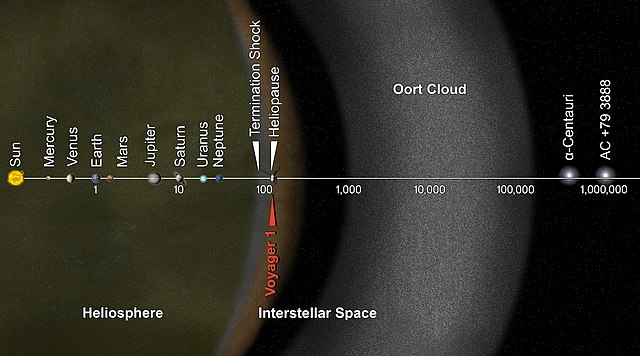Ray McCarthy
Sentient Marmite: The Truth may make you fret.
Sort of!passed through our Solar System 70,000 years ago
Kuiper belt: 30 AU to approximately 50 AU from the Sun.Estimates indicate that the WISE 0720−0846 system passed about 52,000 astronomical units (0.25 parsecs; 0.82 light-years) from the Sun about 70,000 years ago
Oort Cloud: 100,000 AU from the sun. About 2,000 further away than any known object other than comets. Unlike the Kuiper belt which is a torus or doughnut shape (hence "belt") roughly in the plane of the ecliptic, the Oort Cloud is presumed like a very thin "shell". We can't at all detect parts that are in direction of the more obvious parts of Milky way.
So it might have disturbed the orbits of some comets (or maybe nothing) in the Oort Cloud as we know little about it apart from comets that have been documented in Solar orbit (which were not affected).
EDIT:
Eris and its moon are the furthest known objects in the Solar System, on an elliptical orbit 38 to 98 AU orbit (Perihelion to Aphelion), so Scholz's star just a little less than 1000x as far as the mean of Eris's orbit. It's very unlikely to have been visible. If orbital period given in Wikipedia is correct, then for Eris, the passage of Scholz's star (WISE 0720−0846 system) was only 125 orbits (Eris "years") ago!
Last edited:


